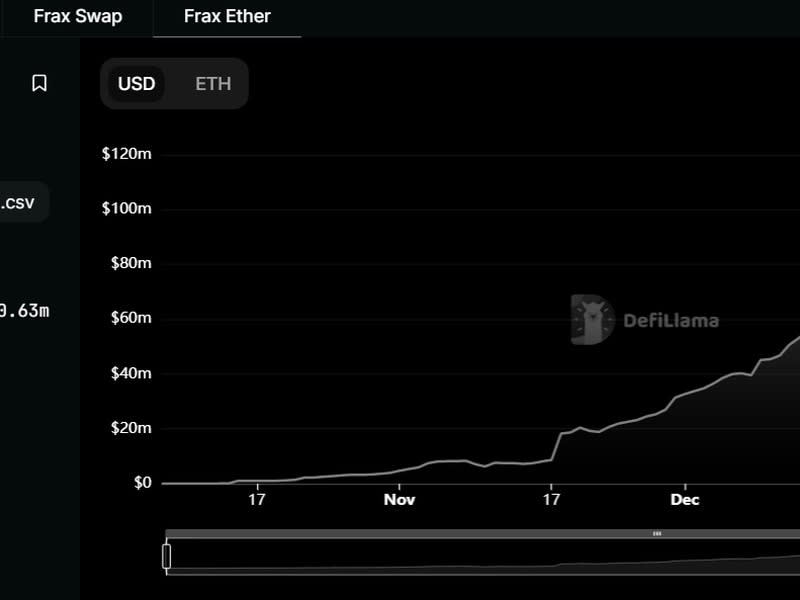DeFi Service Frax Finance Gains Momentum Amid Ether Staking Narrative, FXS in Focus
Decentralized-finance (DeFi) application Frax Finance is briskly gaining favor among investors because of its strong product lineup as liquid staking derivatives (LSD) heat up ahead of the Ethereum blockchain's Shanghai upgrade.
The Frax protocol is a two-token system comprising the FRAX stablecoin and a governance token called frax shares (FXS). FRAX maintains a peg to the U.S. dollar by being partly collateralized by USD coin (USDC) alongside periodic buying and selling of FXS to maintain its market capitalization.
Frax's staked ether product, which was launched in October, is attracting capital. Users deposit ether (ETH) and receive the Frax ether token (frxETH), which is backed 1:1 with ether. The frxETH token can be freely traded or staked on other DeFi applications or on Curve’s liquidity pools – where stakers are earning up to 10% annualized.
At writing time Tuesday, FrxETH holds just above $100 million, data from DefiLlama shows. That is a nearly $50 million increase since the start of January and four times the amount since November.

Frax is offering annualized returns of over 6% to 10% to users who stake ether on the platform. Those rewards are paid out in CRV, FRAX and FXS, depending on which liquidity pool a user stakes his tokens.
In contrast, Lido, the biggest DeFi application by total value locked, offers 5.2% yields to users.
The draw of capital into Frax’s ether pools has resulted in greater demand for FRAX and FXS tokens, with the price of FXS rising over 62% in the past week according to CoinGecko. And because some liquidity pools pay out in FXS, the price increase theoretically means higher rewards for stakers – which, in turn, could drive more ether toward Frax and even more demand for Frax’s tokens.
According to some observers, Frax’s treasury holdings of curve and convex tokens are resulting in outsized returns for some stakers.
“FRAX has an advantage over other LSD platforms at the moment due to their outsized CRV/CVX treasury holdings,” Hal Press, a partner at crypto fund North Rock Digital, said in a tweet this week. “This allows them to stimulate higher ETH staking yield on their staked ETH derivative product than the rest of the market.
“Sentiment among traders increased amid increased utility for FXS tokens. These tokens accrue value from the newly minted FRAX stablecoins and fees from Frax Finance,” Press added.
The summary of the FXS thesis is as follows. FRAX has an advantage over other LSD platforms at the moment due to their outsized CRV/CVX treasury holdings. This allows them to stimulate higher ETH staking yield on their staked ETH derivative product than the rest of the market. https://t.co/ODdkHjxq1O
— Hal Press (@NorthRockLP) January 17, 2023
Understanding Curve
It’s helpful to know how Curve works to fully understand the reason behind the high yields on Frax.
Curve offers an efficient way to exchange stablecoins while maintaining low fees and low slippage, according to Curve Finance. Pools deployed on Curve are backed by centralized or decentralized stablecoins, wrapped tokens – such as wrapped bitcoin (WBTC) – or a basket of various assets.
Depositors on Curve earn annual yields of up to 4% from one of the many pools on the platform.
High trading volumes on liquidity pools on Curve that involve Frax contributes toward the FRAX token holding its intended dollar peg. Additionally, Curve allocates CRV tokens as rewards for liquidity providers to select pools, called gauge rewards, which results in more returns for liquidity providers.
“The long-term effect of the Curve AMO is that Frax could become a large governance participant in Curve itself,” Frax’s technical documents state. Curve held over $6 billion in tokens as of Tuesday and is among the few “blue-chip” DeFi protocols.
